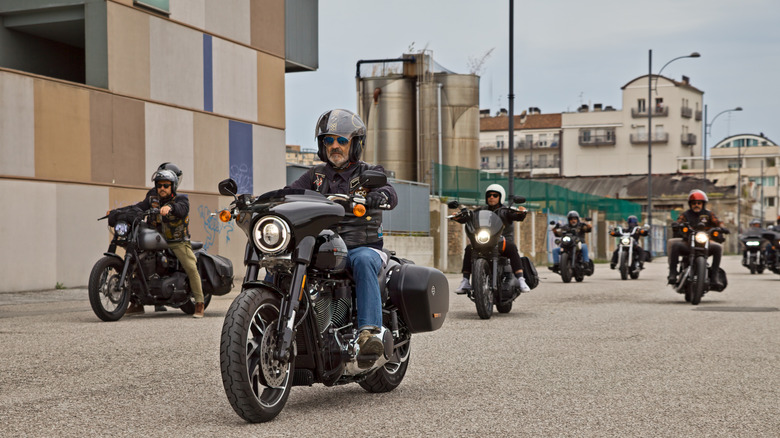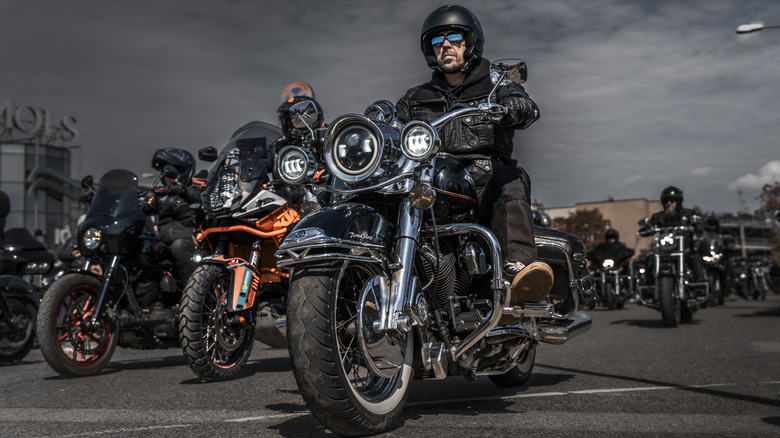What Is A Lone Wolf In The Biker Community?
It's no secret that motorcycle clubs are families of like-minded individuals, bonded by their love for bikes and the freedom that comes with exploring the endless roads crisscrossing the world. For most bikers, whether veterans or just starting, being part of such a family is usually the ultimate goal. However, there's also a select number of bikers who typically opt to ride alone, even though some of them look like they belong to a club.
As with many niches today, the world of motorcycle clubs comes with a distinct lifestyle that many motorcycle enthusiasts are familiar with. You'll find many club members riding around on tourers and cruisers, with many in the Americas opting for the likes of Harley-Davidson and Indian Motorcycle, while others across the globe gravitate toward brands such as Kawasaki and Honda.
Additionally, many of these bikers will dress in a way that sets them apart from riders in other niches, such as wearing leather jackets with patches like the One Percenter (1%er) patch and unique gear like German-style helmets. However, while many of them are affiliated with a club and even display their club's insignias and logos on their gear and motorcycle, some, despite showing many of the signs of being a biker in a motorcycle club, ride solo. It is these bikers that the biker community calls lone wolves.
Lone wolves don't adhere to rules set by any motorcycle club
While motorcycles were first developed in the late 1800s, it wasn't until the early 20th Century that motorcycle clubs started sprouting across regions in America. Even back then, one of the core ideas of those clubs was the need for motorcycle enthusiasts to be among like-minded individuals so they could improve riding conditions. However, this need intensified after World War II, when war vets returned home and sought to find the camaraderie and brotherhood that had helped them keep their heads above water during the war by forming motorcycle clubs.
Of course, factors such as the wide availability of post-war bikes greatly contributed to the formation of these clubs. Notable names like the Hells Angels, which are counted among the most famous outlaw motorcycle clubs in California, emerged at this time. As the century progressed, many other clubs formed worldwide, becoming so popular that they found themselves in art, literature, and even the news.
These clubs come with rules, schedules, and responsibilities that each biker is expected to follow to the T. In a scenario where a biker values their own freedom and independence, they will choose to still partake of the biker lifestyle but not be affiliated with any of these clubs. That means they won't be governed by the rules that keep club members in check. However, it also means they won't be able to enjoy any advantages that come with being part of these clubs.

